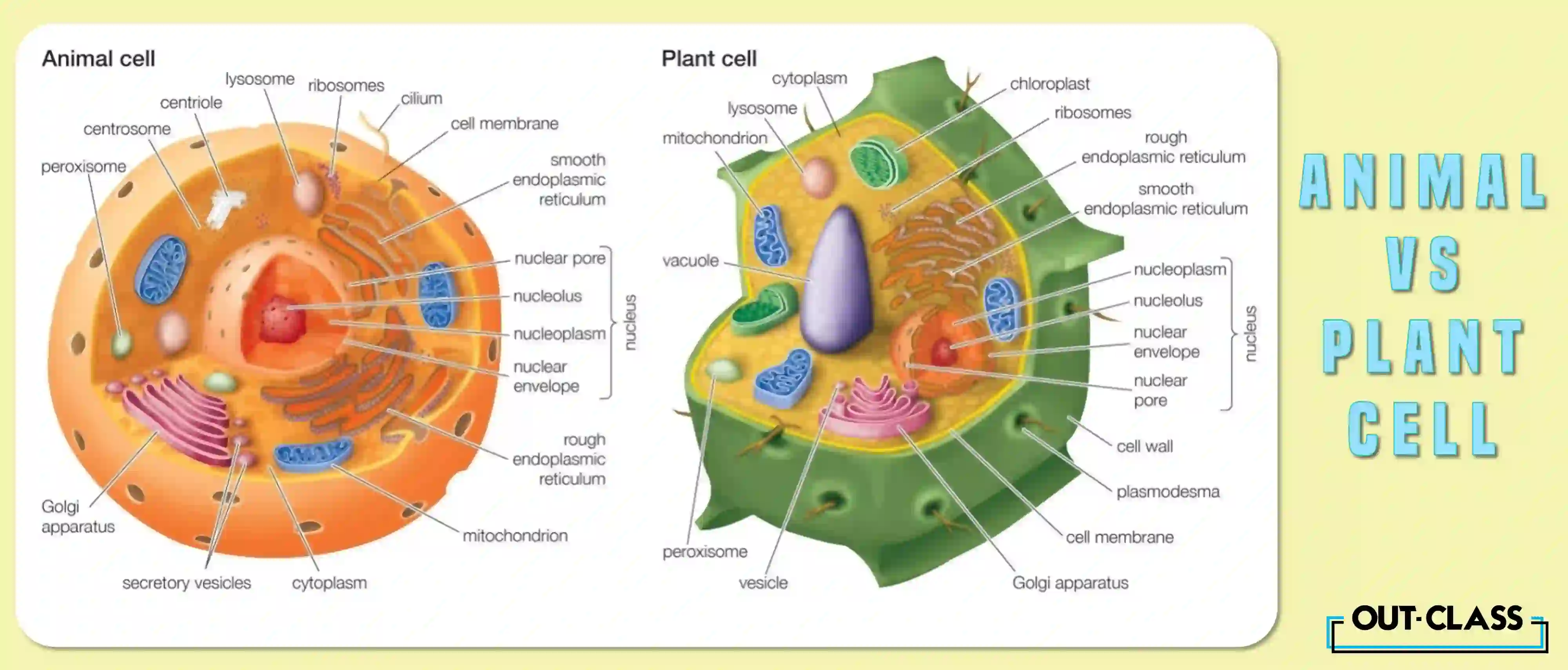In IGCSE and O Level Biology, understanding the distinctions between plant and animal cells is fundamental. Let's explore the intricacies of plant and animal cells in IGCSE and O Level concepts, exploring their structures and critical differences.
Plant Cell vs Animal Cell
What is a Plant Cell?
A plant cell is characterized by a rigid cell wall, chloroplasts containing chlorophyll, and a large central vacuole. These features are crucial for photosynthesis, giving plants the unique ability to harness sunlight for energy to manufacture glucose and release oxygen.
What is an Animal Cell?
Contrastingly, an animal cell, a staple in IGCSE and O Level Biology, lacks a cell wall but possesses a flexible cell membrane. Instead of chloroplasts, animal cells house mitochondria, the powerhouse responsible for energy production. Additionally, animal cells may contain lysosomes, which are vital for waste disposal.

Differences between Animal and Plant Cell
-
Cell Structure:
Plant cells have a cell wall for structural support, while animal cells lack this feature.
-
Vacuoles:
Plant cells boast one large central vacuole, while animal cells typically have multiple small vacuoles.
-
Nucleus Placement:
In animal cells, the nucleus sits centrally, while in plant cells, it's usually positioned to the side.
-
Chloroplasts:
Chloroplasts, vital for photosynthesis, are found exclusively in plant cells.
-
Cell Shape:
Animal cells tend to be irregularly shaped, whereas plant cells maintain a fixed, rectangular form.
Structure
Understanding animal and plant cell structures is imperative. Plant cells have a defined shape due to the cell wall, while animal cells are more flexible. Both cells share common structures, such as the nucleus, cytoplasm, and endoplasmic reticulum, but their unique features set them apart.
Similar Parts of Animal and Plant Cells
O Level and IGCSE students must grasp the essential components of animal and plant cells. The nucleus serves as the command center, dictating cellular activities. At the same time, the cytoplasm houses various organelles, ensuring the cell's proper functioning. Ribosomes serve as sites of protein synthesis in both animal and plant cells.
Conclusion
In conclusion, mastering the intricate world of plant and animal cells in IGCSE and O Level Biology isn't just important—it's the root of success! Delving into their structures and disparities lays down a sturdy foundation, setting the stage for blooming brilliance in the IGCSE and O Level journey ahead.
FAQs
Q. What are the main differences between plant and animal cells?
Plant cells have a rigid cell wall, chloroplasts for photosynthesis, and a large central vacuole, while animal cells lack a cell wall but have a flexible cell membrane and contain mitochondria for energy production.
Q. What is the role of chloroplasts in plant cells?
Chloroplasts in plant cells are responsible for photosynthesis, where they use sunlight to convert carbon dioxide and water into glucose, releasing oxygen as a byproduct.
Q. How do vacuoles differ in plant and animal cells?
Plant cells typically have one large central vacuole that stores water and provides structural support, while animal cells may have multiple small vacuoles with various functions like storage and waste disposal.
Q. Where is the nucleus located in plant and animal cells?
In animal cells, the nucleus is usually centrally located, while in plant cells, it is often positioned to the side due to the large central vacuole.
Q. What is the significance of the cell wall in plant cells?
The cell wall provides structural support and protection to plant cells, helping maintain their shape and integrity.
Q. Do animal and plant cells share any common structures?
Yes, both animal and plant cells have common structures like the nucleus (containing genetic material), cytoplasm (where cellular activities occur), and ribosomes (sites of protein synthesis).



